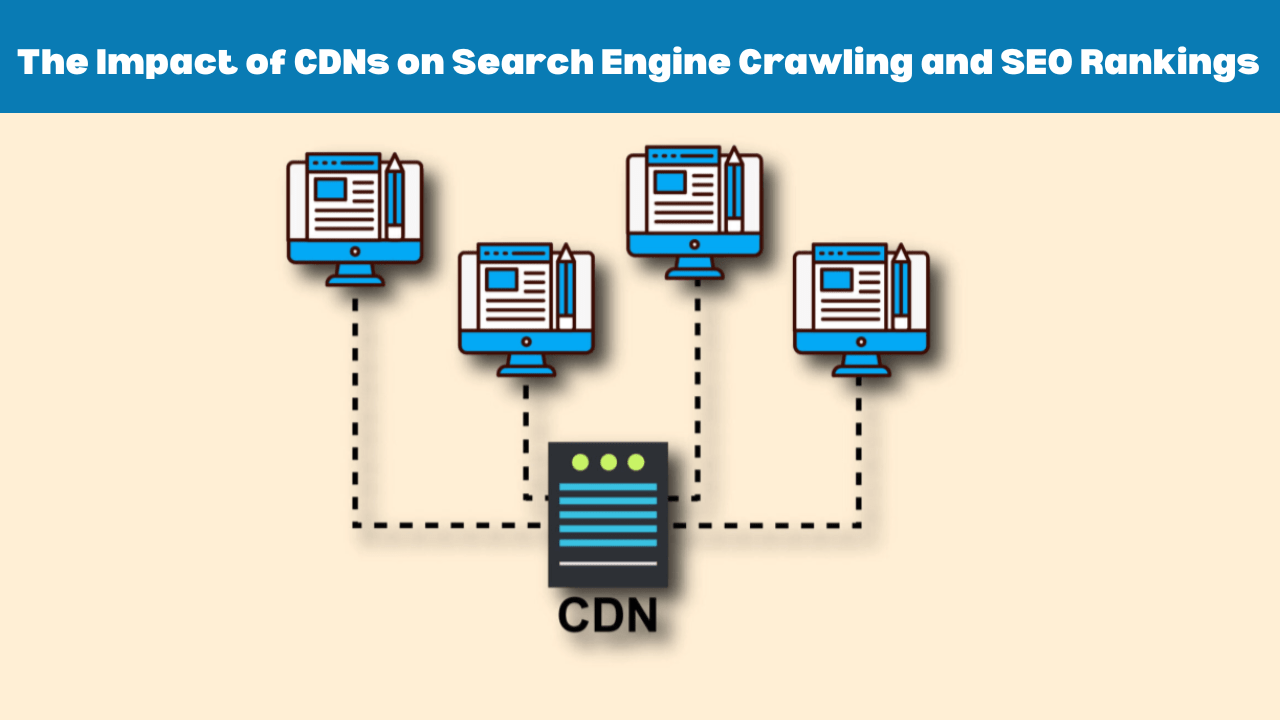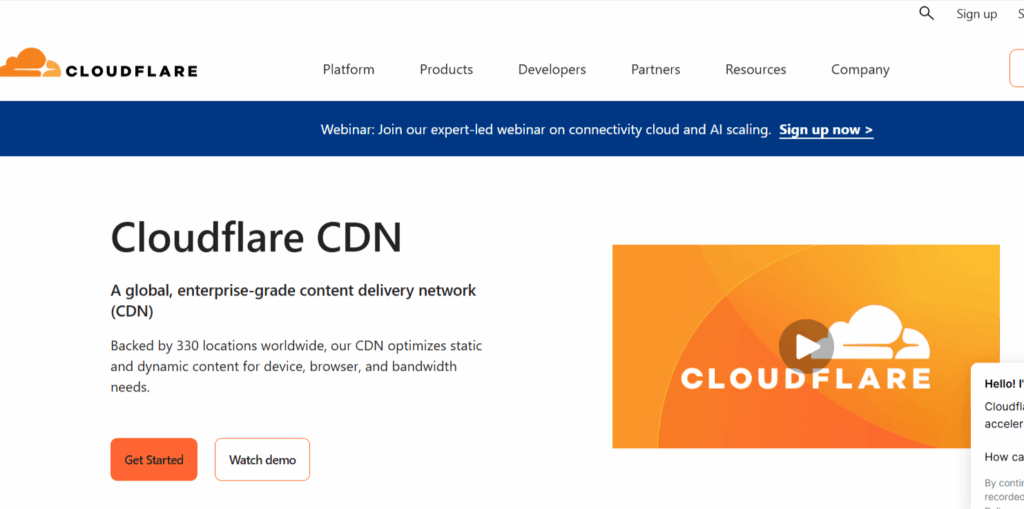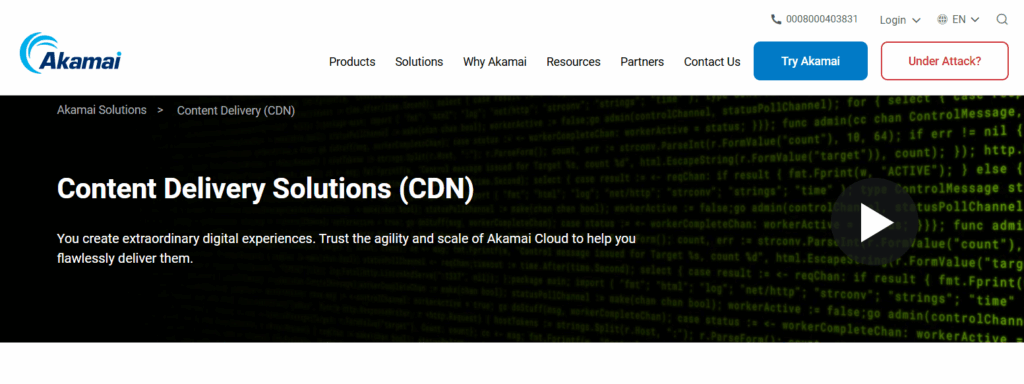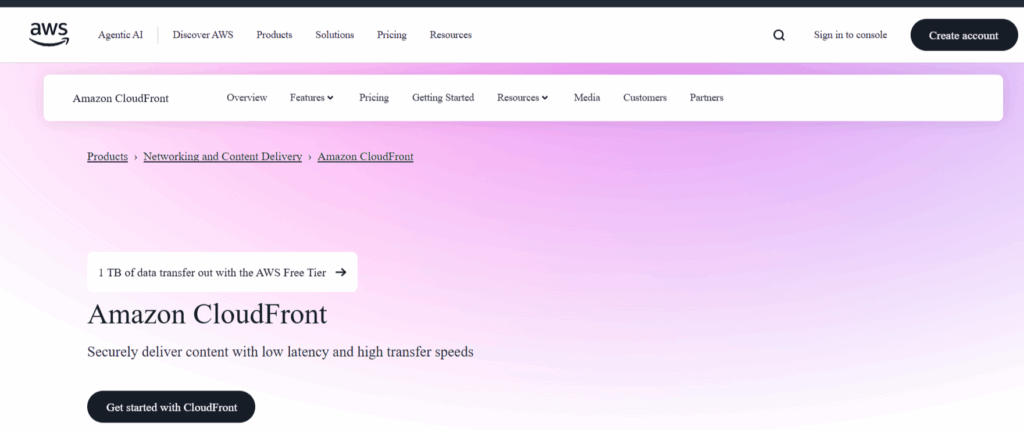
How CDNs Affect Search Engine Crawling and Rankings
- accuindexcheck
- 0
- Posted on
A CDN (Content Delivery Network) is a group of servers positioned in various geographic locations that deliver stored copies of website content to users. All users are served content from a server near them instead of connecting to the primary hosting server. Thus, the users experience reduced load time, increased security, and even with high traffic, the website remains stable.
A CDN is essential not just for small or big enterprises, but for virtually all kinds of websites. As of today, e-commerce sites, personal blogs, and other types of websites are dependent on CDNs to maintain the interest of their users. A slow website not only reduces the user experience but also negatively impacts search engine optimization (SEO). Sites that are slow can be demoted in rankings, while stable and fast websites may be pushed higher due to the trust they exude.
In this article, we will analyze the effect CDNs have on crawling efficiency, the impact they have on rankings, and how the integrations can be used to improve the SEO performance of the website.
What is a CDN and How Does It Work?
A Content Delivery Network (CDN) is a network of multiple geographically distributed servers that collaborate to deliver website content to users at higher speeds. A CDN makes numerous copies of your website’s files such as images, videos, and web pages and stores them on its numerous servers positioned in different regions. While normal hosting delivers content from one main server, CDNs deliver from many servers.
The CDN locates the server closest to the user and fetches the website data from it. This setup decreases the user-to-server distance, which aids in website loading speed. Imagine having multiple delivery centers as opposed to one main warehouse. It works in the same way and proves to be very effective.
To illustrate, suppose your website is based in the U.S. Outside visitors will still be able to access the website via nearby CDN nodes. A visitor from Asia would have to connect to your U.S. server, which would cause a delay. A CDN ensures an Asia-based server takes care of the visitor, which would make serving your website almost instant.
Search Engine Crawler Interaction with Websites
Search engine crawlers such as Googlebot and Bingbot are web indexing bots deployed to systematically browse the web and collect pages for indexing. They follow links and analyze websites to gather data regarding the structure, content, and performance of particular sites. The speed at which a website can be accessed and the ease with which the bot can access the page has a direct positive impact on the probability of the website being featured in search results.
As far as slow and/or frequently down sites are concerned, the crawlers might choose not to fully explore them. The most important accessibility issue is that very harsh errors, overly simple site structures, or very restrictive robots.txt files that block crawling can completely block indexing.
For big sites, it is important to manage the crawl budget so that the most important pages get indexed on a regular basis. Crawl budget, put simply, is the number of pages that a search engine is willing to crawl on a site in a certain amount of time. Having too many irrelevant pages on your site or having a site that is slow will prevent exploration of good pages. Improving speed and server response will ensure that the crawl budget can be used effectively, proper page filters provided, and unnecessary pages removed.
Positive SEO Impacts of CDNs
Besides enhancing your website’s loading speed for users, CDNs offer significant SEO advantages. CDNs enhance the speed, dependability, and availability of your site, which in turn are beneficial for search engines to crawl, index, and rank your site.
Faster Page Speed
SEO and UX are aligned when it comes to quick page loads as they both minimize bounce rates. Moreover, from an SEO standpoint, swift sites are easier for search engine bots to process, facilitating the efficient indexing of a larger number of pages. Page speed is also a Google search and ranking factor as websites that perform quantitatively better tend to receive a better ranking, which a CDN is capable of offering.
The Global Reach
For a user accessing your website from say, Europe, CDNs copy and serve the content from a nearby server, thereby reducing the access delay and speeding your website. The steady fast loading of your site not only increases the ease of use and hence engagement, but is also considered a ranking factor, showing that your website is useful to a global audience.
Better Crawl Efficiency
With reduced main server load, CDNs help maintain the overall server performance. This allows crawlers to visit and fetch a greater number of pages without encountering slow response times or errors, resulting in quicker discovery and indexing of content. This functionality is particularly effective for large sites having a wide scale of hundred to thousand pages.
Higher Uptime & Reliability
More effective handling of traffic and server outages means fewer server errors. Fewer server errors translate into fewer crawl interruptions, lowering the chances of missed indexing opportunities and considerable improvement in the overall SEO performance.
Mobile SEO Boost
Slow networks are the norm for mobile users, therefore a CDN ensures optimized quicker page loads for smartphones and tablets. Given that Google uses mobile-first indexing, the enhanced mobile and tablet accessibility is beneficial for search rankings.
Potential SEO Challenges with CDNs
There are many SEO advantages to be had from CDNs; however, misconfiguration or incorrect setup can pose certain challenges to crawling and affect ranking. These risks need to be understood so one may be able to avoid these common pitfalls.
Duplicate Content Problems : In some cases, the URLs of the CDN are not set in the right way: the same content under different URL addresses. Search engines generally consider duplicate content, diluting rankings and inhibiting the indexing of your pages. Correct canonicalization should be used to indicate which of the two is the actual version.
Wrong Canonical Tags : Setting up CDNs wrongly could lead to giving out wrong canonical tags, or worse, not include any! This poses further problems to search engines by confusing them with which version of a page they are supposed to index or rank. Canonical tags should always point to the main URL to save SEO value.
Blocked Crawlers : Elsewhere, some security layers within CDNs or firewall settings may unintentionaly block search engine bots. If crawlers cannot get through to your pages, then your content will not be indexed, hurting your rankings. Always test that all major crawlers are able to access your site through the CDN.
Geotargeting Confusion : CDNs may select different content based on the location of the user, of course aiding in regional targeting. When done poorly, search engines might see multiple versions of the same page, causing indexing problems or ranking discrepancies. Management of proper hreflang and URL structure is required to eliminate the confusion.
Best Practices for Using CDNs without Hurting SEO
A well-configured CDN can truly enhance your website’s performance to the advantage of SEO, but a bad configuration can introduce tons of headaches. The following best practices ensure that your CDN properly supports both the users and search engines.
Implement Correct Canonical Tags
There should always be canonical tags pointing to the main version of each page in order to avoid duplicate content issues when the CDN serves content from multiple servers or URLs, as search engines should be kept informed about which page to index.
Ensure Crawlers are Allowed in Robots.txt and in CDN Settings
Check with your search engine bots – Googlebot and Bingbot- to make sure they can crawl and access the content served via CDN. Accidentally restricting access to these crawlers might seem trivial, but it can prevent pages from being indexed, which negatively impacts SEO.
Use HTTPS and Implement SSL/TLS Certificates
CDN must fully support HTTPS together with valid SSL/TLS certificates. A secure connection is not only trust-building for users but also a Google ranking factor. A bad configuration of SSL causes crawlers to get confused, which might adversely affect rankings.
Enable Gzip and Brotli Compression
Compression lessens file sizes, consequently improving the download time of pages. Faster pages mean better user experience and better crawling of pages by crawlers within the crawl budget.
Optimize Images and Videos
Large media files slow down your site. To enhance performance, use CDNs that deliver optimized images and videos. They give ox and usability as SEO signals.
Implement Proper Redirects
Make sure that all redirects are correctly set up. Improper redirects can cause real confusion for indexing and search engines.
Test Crawlability with Google Search Console
Test how Googlebot and other crawlers are accessing your site so regularly. Errors, blocked pages, and CDN-related issues can be found via the Google Search Console that need rectification.
Monitor Crawler Activity through Site Logs
Check your server logs to ensure crawlers are able to work efficiently. This monitoring helps in identifying the issues related to CDN that might slow down or block crawlers and keep your SEO on track.
Some Common Use Cases of CDNs
Common uses of CDNs include performance, reliability, and SEO improvements for many websites and applications. Knowing the common uses will help a website owner identify where CDNs really add value there.
E-Commerce Websites : Online stores typically encounter a huge volume of traffic; large images and product videos are quite common. CDNs assure brisk load times for buyers around the globe, server load does not peak during sales, and good crawl efficiency that helps search engines index product pages quickly.
Media & Streaming Platforms : Such websites deliver videos, audio, and high-resolution images, while CDNs deliver content in a way that avoids buffering. Greater speed keeps users entertained, improves rankings, and decreases bounce rate for media-heavy sites.
Global Businesses & Enterprises : We can say, for CDNs, companies with clients distributed all over the globe are potential beneficiaries by means of fast content delivery across continents. That is why consistent user experience, SEO in various regions, and reduced latency are among their advantages.
Blogs and Content-Heavy Websites : These are sites that provide frequent postings with pictures and infographics, and hence have content that deserves distribution through a CDN. This helps increase page speed and reduces load on the server, plus new articles get crawled by search engines quicker.
Mobile-First Websites and Apps : Considering most people use smartphones to access websites nowadays, CDNs optimize content for mobile networks. A CDN thus aids in fast mobile loading, which enhances user experience and supports Google’s mobile-first indexing.
Sudden-High-Traffic Events Or Campaigns : High-traffic websites with occasions like product launches, events, or viral campaigns use CDNs to stay away from downtime. The warranty of pages through a reliable CDN keeps users and search engines equally happy.
Popular CDN Providers
Choosing an appropriate CDN provider becomes the prime ingredient to get the most out of your website’s quickness and SEO benefit. So here is a list of some common ones and what they each have to offer:
Cloudflare

Called one of the most widely and popular CDNs, Cloudflare combines global caching with DDoS protection and SSL support. Other performance optimization features include automatic image and mobile optimization, which make it easy for beginners and trusted for SEO.
Akamai

With the largest global network in existence, it has been the own choice of enterprise-level sites; it has strength in managing traffic, handling deliveries of media, and securing the sites, thus making fast ones in presence for the visitors.
Amazon CloudFront

Based on AWS itself, CloudFront goes along with other AWS tools quite well. It offers low-latency content delivery, real-time analytics, security, and is a good aptitude for e-commerce and large-scale applications.
Fastly
Being a real-time cache and instant update site, Fastly is suited for those websites that deal with dynamic content delivery. Its edge computing features reduce load on the servers while ensuring fast site performance with an SEO-friendly architecture.
StackPath
An easy-to-use CDN provider that integrates global delivery, security, and analytics. Well suited for small to medium size websites, StackPath boasts an easy setup and accommodation for speed and SEO performance.
FAQs
Can a CDN improve Google PageSpeed Insights score?
Yes, since CDNs provide content distribution and application optimization, they improve load time, which in consequent affects page speed scores favorably.
Does a CDN replace my hosting provider?
No. A CDN helps in better content delivery and offloading traffic from the servers, but it is not a substitute for your primary hosting.
Should I use a CDN for a small website?
It depends on who you are asking. Small and local sites may not see major speed improvements from a CDN; nevertheless, it can improve site reliability, uptime, and mobile performance.
Are CDNs good for mobile SEO?
Absolutely! Faster mobile load time rewards the mobile user experience and lends a hand in Google mobile-first indexing to cement rankings.
Are there free CDNs?
Yes, for instance, Cloudflare offers a free plan, which the Service is enough for a small website/features, whereas paid plans come with much more.
Conclusion
They would result in improving website speed, its reliability, and its SEO performance. They also assist search engines in crawling the site well and improving user experience and support mobile-first indexing.
Yet, the website may not reap the complete benefits unless the CDN is properly configured: proper canonical tags, crawlers being allowed to crawl, optimized media, and secure connections. Used wisely, these could, at the same time, help sites performance-wise and Search Engine Optimizing-wise, with preventing the boxes the average user stumbles into.